Key takeaways:
- Composition is crucial in photography as it guides the viewer’s eye and influences emotional responses through elements like the rule of thirds, light, and space.
- Successful compositions utilize techniques such as leading lines, natural framing, and depth of field to improve focus and eliminate distractions from the subject.
- Overcoming composition challenges often involves stepping back, simplifying the scene, and experimenting with different perspectives to achieve clarity and impact.
- Learning patience and the importance of storytelling in photography enhances the narrative quality of images, allowing deeper connections with subjects.
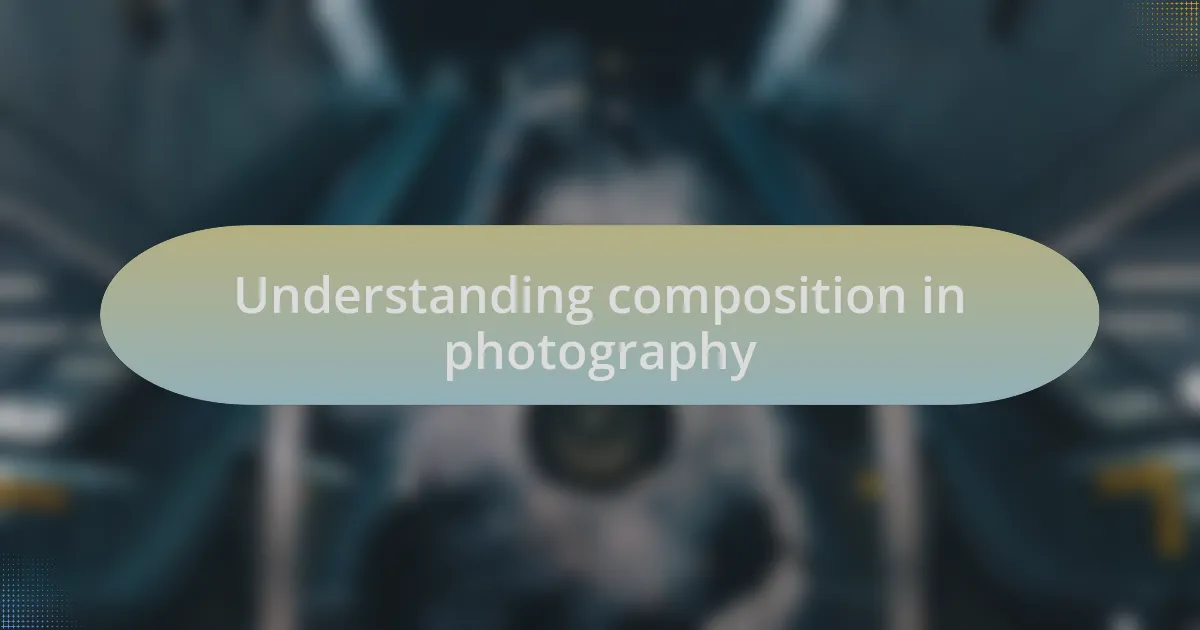
Understanding composition in photography
Composition is the backbone of photography; it’s how we guide the viewer’s eye through an image. I still remember the first time I captured a landscape that truly resonated with me. I positioned the horizon line a third of the way up the frame, which drew the eye into the foreground—a small stream that glistened under the sunlight. Was it mere luck, or was it an understanding of composition that made the difference?
As I delve deeper into the world of composition, I’ve come to appreciate the rule of thirds. By mentally dividing the frame into nine equal parts, I find that placing key elements along these lines or their intersections can create a dynamic balance. It’s almost like a dance; there’s a rhythm that can elevate a photo from ordinary to extraordinary. Have you ever felt that thrilling moment when a photograph just clicks into place? It’s what keeps me coming back to my camera.
Light, shape, and space are my constant companions in the composition journey. The way light interacts with a subject can transform a mundane scene into something magical. I once shot a portrait just after sunrise; the golden light added warmth that enhanced the mood of the image. Do you ever notice how your emotional response changes with different lighting scenarios? Understanding this interplay can be the key to creating more impactful images.
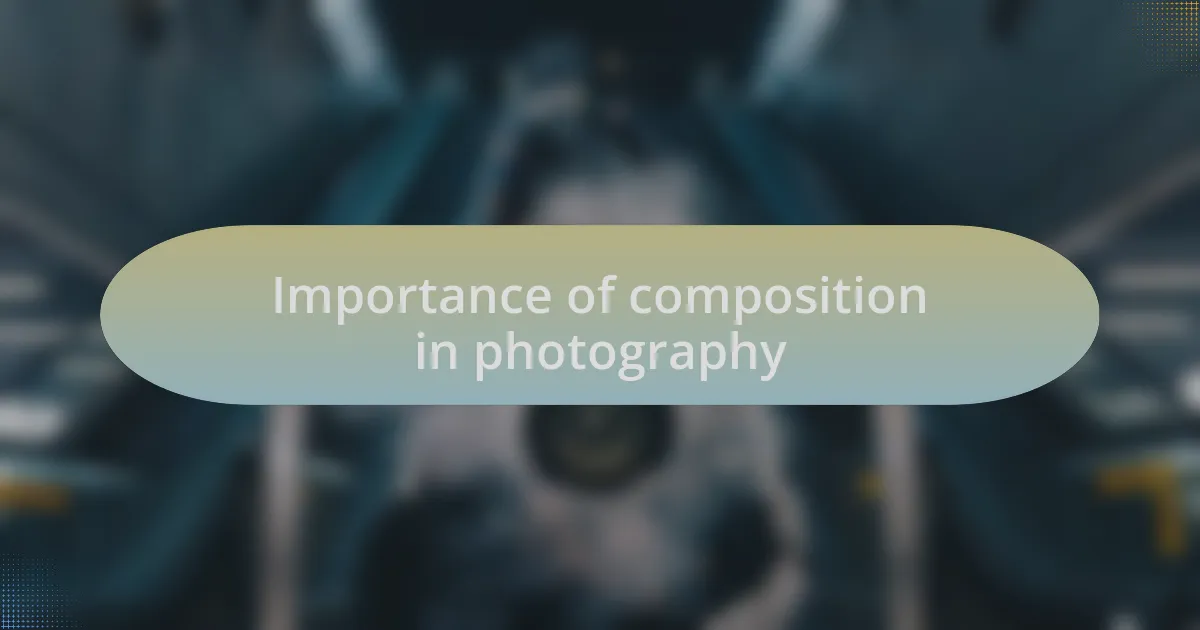
Importance of composition in photography
The importance of composition in photography can’t be overstated. When I look at my own images, I quickly realize that a strong composition can evoke emotions and tell stories. I recall shooting a bustling street scene; by framing the crowd tightly through a nearby archway, the chaos outside felt contained. Isn’t it fascinating how an arrangement can transform a moment into a narrative?
Every photograph is a conversation between the viewer and the subject, and composition sets the stage. I remember experimenting with leading lines during a hike; a winding trail through a forest not only drew my eye deeper into the image but also sparked a sense of adventure. Have you ever noticed how your gaze naturally follows pathways in your photos? It’s as if they invite you into the scene.
Moreover, proper composition can help eliminate distractions that pull attention away from the subject. There was a time when I captured a vibrant flower garden, but the background was cluttered and distracting. By shifting my angle to create a soft blur behind the blooms, the focus shifted where I wanted it to be. Isn’t it remarkable how sometimes a slight change in perspective can enhance the overall impact of an image?
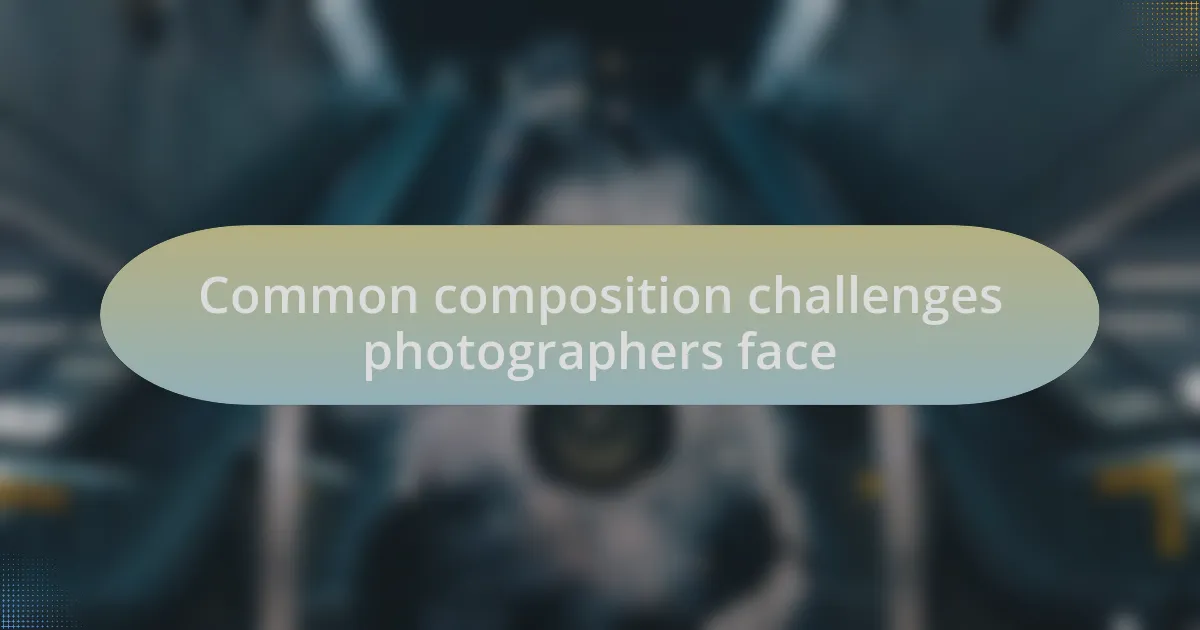
Common composition challenges photographers face
Composition challenges often arise from the struggle to balance elements within a frame. I vividly recall a landscape shoot where I was mesmerized by a sweeping sunset. However, the foreground was cluttered with rocks, pulling attention from the vibrant sky. It was a moment of frustration, as I had to either reposition myself or wait for the light to change. Have you experienced the tug-of-war between so many elements in a single shot?
Another common hurdle is achieving the right focal point. During a recent portrait session, my subject’s expression was perfect, but the background kept competing for attention. I found myself leaning towards the idea of creative depth of field. By adjusting my aperture settings, I was able to blur the distracting details while highlighting my subject. Have you ever tried using depth of field to bring focus to what truly matters in your composition?
Lastly, understanding the rule of thirds can be daunting for many photographers. I remember my early days of shooting, when I would dutifully center my subjects, thinking it was the right approach. It wasn’t until a mentor pointed out the dynamic energy created by off-center compositions that I began to see the world differently through my lens. How has embracing or struggling with this rule shaped your own photographic journey?
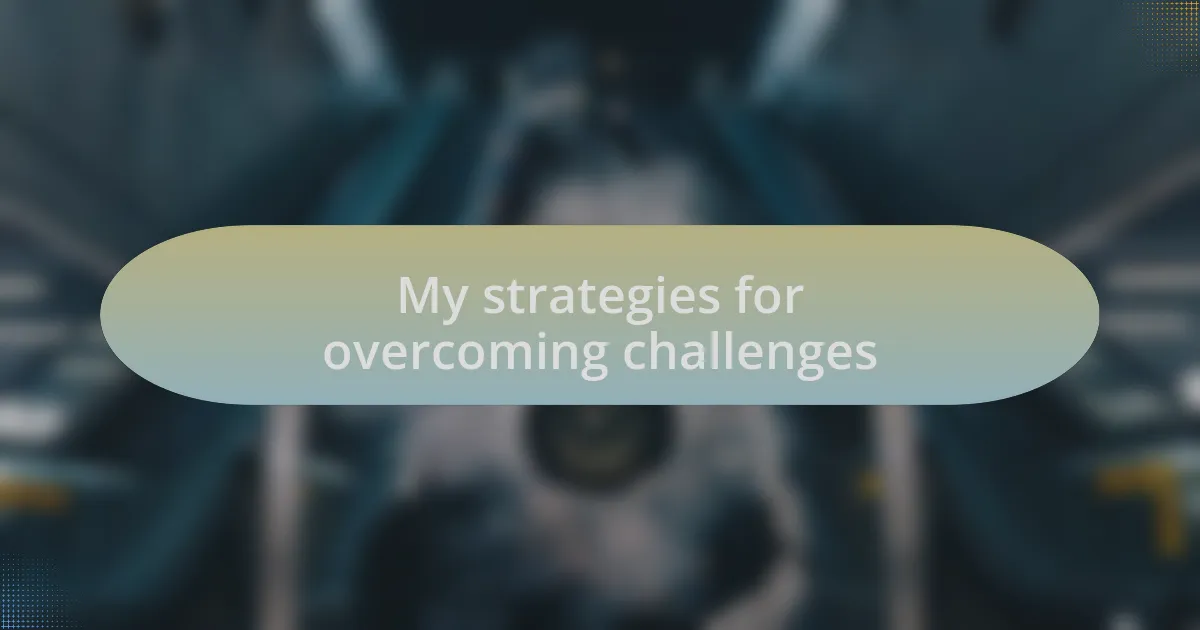
My strategies for overcoming challenges
When I face a challenging composition, my first strategy is to step back and reassess the scene in front of me. For instance, I was once at a beach where the juxtaposition of people and waves created chaos in my frame. By taking a moment to breathe and view the scene from a different angle, I was able to isolate a group of surfers against the vibrant hues of the sky. Have you ever just stepped back to gain clarity?
Another method I often utilize is simplifying the composition by eliminating distractions. During an event shoot, I once felt overwhelmed by the multitude of colors and elements vying for attention. I remembered to focus on one moment—capturing the genuine laughter of friends rather than trying to include every detail in the background. It’s surprisingly liberating to let go of excess elements; have you found yourself in a similar moment of clarity?
Additionally, I like to experiment with varying perspectives; it’s amazing how a simple shift in viewpoint can transform a shot. I think back to a wildlife photography outing where I crouched low to capture a deer in the evening light. This change allowed me to create an intimate connection with the animal, drawing the viewer’s eye directly to its gentle gaze. What unexpected angles have you explored that turned out to be game-changers in your shots?
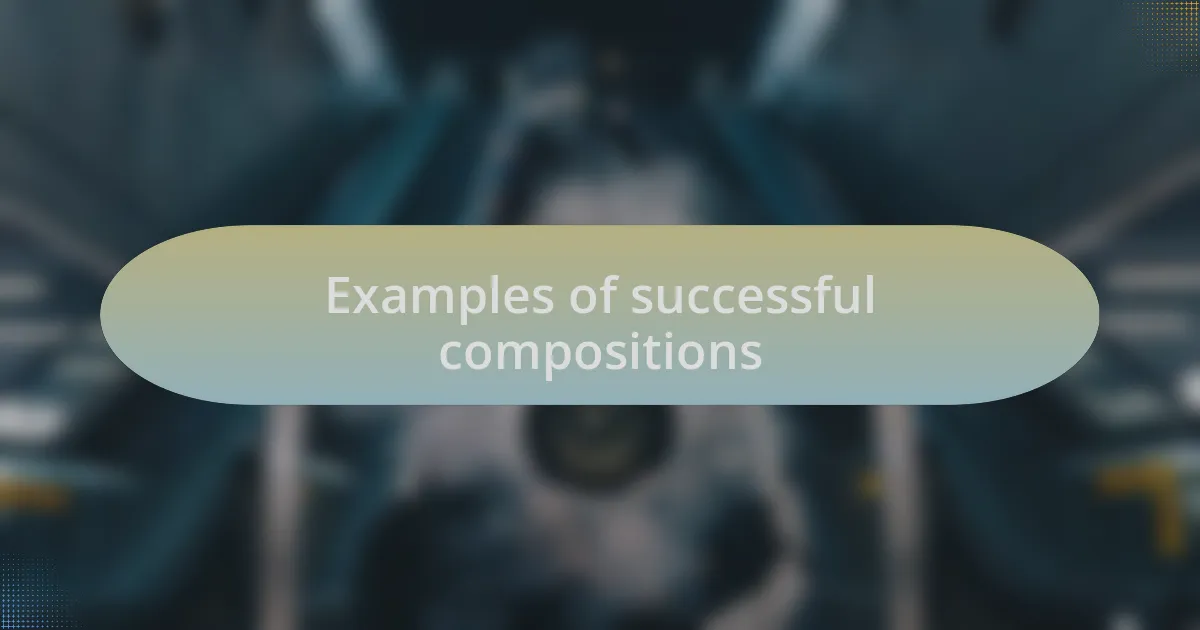
Examples of successful compositions
Successful compositions often hinge on the use of natural frames to guide the viewer’s eye. I once captured a stunning landscape where a pair of tree branches framed a majestic mountain peak. By positioning my camera to incorporate these natural elements, the final shot felt more cohesive and inviting. Have you ever noticed how framing can add depth to your photos?
Then there’s the powerful impact of leading lines. During a cityscape shoot at dawn, I spotted a winding path cutting through the park, leading towards a glowing skyline. By incorporating that path, I created a sense of journey, drawing the viewer into the scene. Have you considered how leading lines can enhance perspective in your compositions?
Lastly, effective use of light can make or break a composition. I recall a portrait session where the soft golden hour light highlighted the subject’s features beautifully. This warm glow added an emotional layer, evoking feelings of nostalgia and warmth. What role does lighting play in your photographic journey?
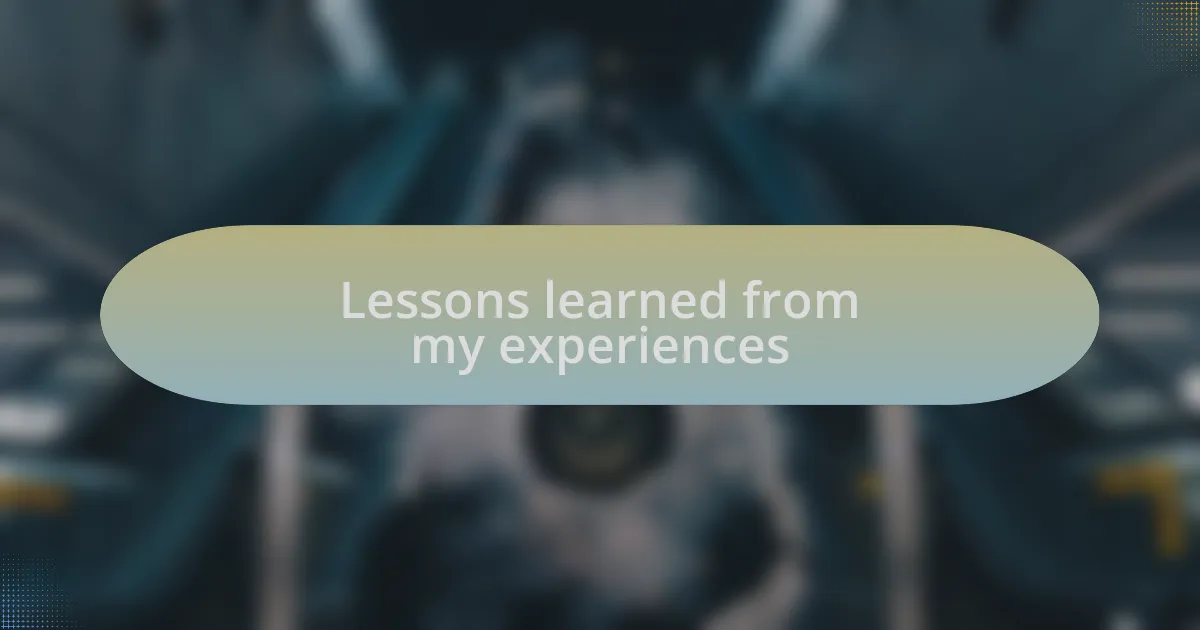
Lessons learned from my experiences
Lessons learned from my experiences
Throughout my photographic journey, I’ve come to realize that patience is just as important as technical skill. I remember a wildlife shoot where I waited for hours, watching and waiting for the perfect moment to capture a bird in flight. That experience taught me that sometimes, the best shots require time and persistence, and it’s crucial to embrace the waiting as part of the creative process. Have you ever found that some of your best images came after considerable patience?
I’ve also learned that experimenting with different perspectives can drastically change the narrative of a photograph. During a recent assignment, I shot the same subject from both eye level and low to the ground. The low-angle shot revealed textures and details that were previously unnoticed, transforming an ordinary scene into something extraordinary. This revelation made me appreciate the power of perspective—how often do we restrict ourselves to just one viewpoint in our photography?
Another lesson was the importance of storytelling in each frame. I recall a candid moment I captured at a family gathering, where a child’s spontaneous laugh illuminated the scene. That single photo conveyed emotions that words couldn’t express. It made me wonder: are we as photographers connecting with our subjects deeply enough to tell their stories through our images? Each click should capture not just a moment, but an entire narrative.